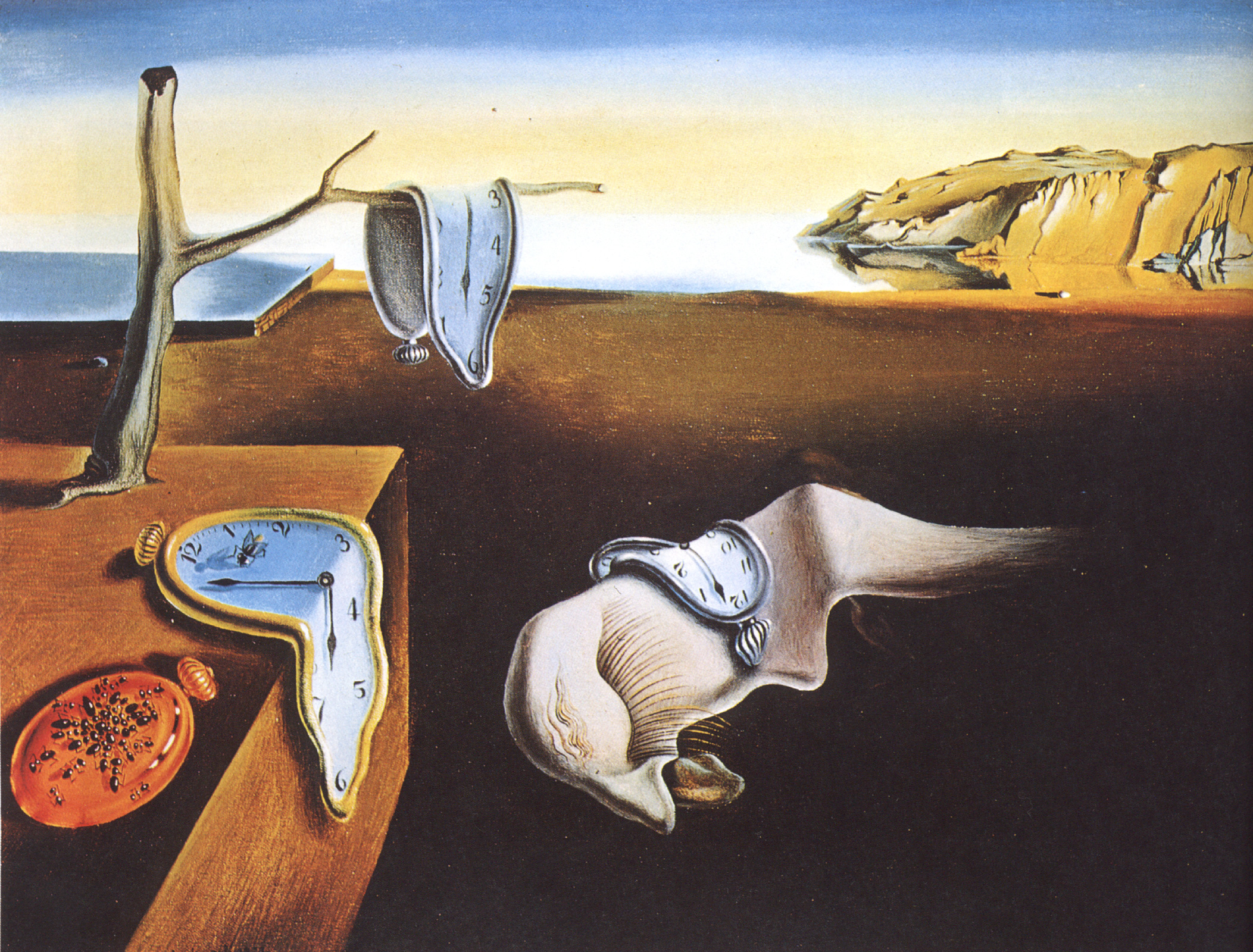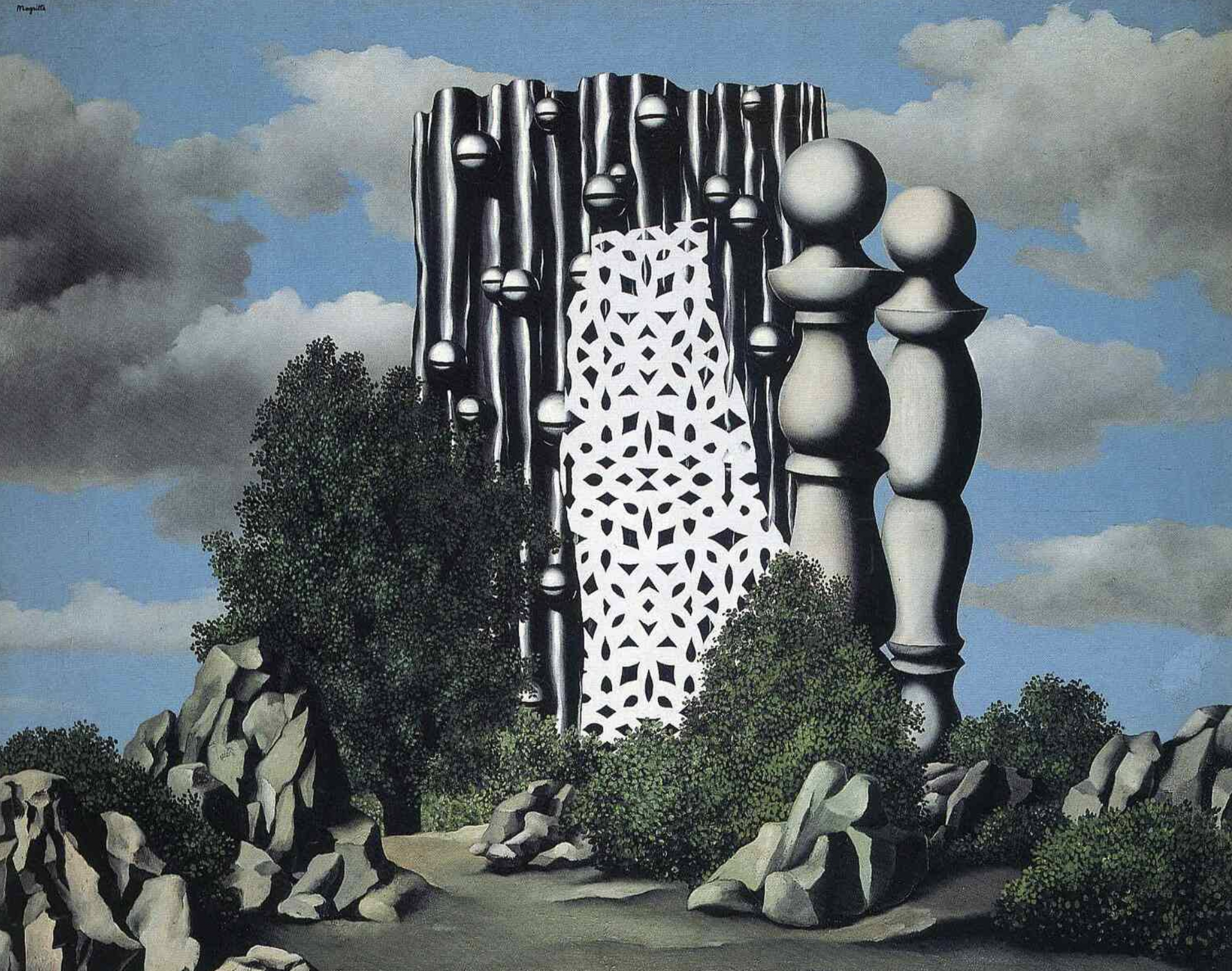

Before his signature works like The Atrocity Exhibition, Crash, and High-Rise, J. G. Ballard published three apocalyptic novels, The Drowned World, The Burning World, and The Crystal World. Each of those books offers a different vision of large-scale environmental disaster, and the last even provides a clue as to its inspiration. Or rather, its original cover does, by using a section of Max Ernst’s painting The Eye of Silence. “This spinal landscape, with its frenzied rocks towering into the air above the silent swamp, has attained an organic life more real than that of the solitary nymph sitting in the foreground,” Ballard writes in “The Coming of the Unconscious,” an article on surrealism written shortly after The Crystal World appeared in 1966.
First published in an issue of the magazine New Worlds (which also contains Ballard’s take on Chris Marker’s La Jetée), the piece is ostensibly a review of Patrick Waldberg’s Surrealism and Marcel Jean’s The History of Surrealist Painting, but it ends up delivering Ballard’s short analyses of a series of paintings by various surrealist masters.
The Eye of Silence shows the landscapes of our world “for what they are — the palaces of flesh and bone that are the living facades enclosing our own subliminal consciousness.” The “terrifying structure” at the center of René Magritte’s The Annunciation is “a neuronic totem, its rounded and connected forms are a fragment of our own nervous systems, perhaps an insoluble code that contains the operating formulae for our own passage through time and space.”


In Giorgio de Chirico’s The Disquieting Muses, “an undefined anxiety has begun to spread across the deserted square. The symmetry and regularity of the arcades conceals an intense inner violence; this is the face of catatonic withdrawal”; its figures are “human beings from whom all transitional time has been eroded.” Another work depicts an empty beach as “a symbol of utter psychic alienation, of a final stasis of the soul”; its displacement of beach and sea through time “and their marriage with our own four-dimensional continuum, has warped them into the rigid and unyielding structures of our own consciousness.” There Ballard writes of no less familiar a canvas than The Persistence of Memory by Salvador Dalí, whom he called “the greatest painter of the twentieth century” more than 40 years after “The Coming of the Unconscious” in the Guardian.


A decade thereafter, that same publication’s Declan Lloyd theorizes that the experimental billboards designed by Ballard in the fifties (previously featured here on Open Culture) had been textual reinterpretations of Dalí’s imagery. Until the late sixties, Ballard says in a 1995 World Art interview, “the Surrealists were very much looked down upon. This was part of their attraction to me because I certainly didn’t trust English critics, and anything they didn’t like seemed to me probably on the right track. I’m glad to say that my judgment has been seen to be right — and theirs wrong.” He understood the long-term value of Surrealist visions, which had seemingly been obsolesced by World War II before, “all too soon, a new set of nightmares emerged.” We can only hope he won’t be proven as prescient about the long-term habitability of the planet.
Related content:
Sci-Fi Author J.G. Ballard Predicts the Rise of Social Media (1977)
What Makes Salvador Dalí’s Iconic Surrealist Painting “The Persistence of Memory” a Great Work of Art
An Introduction to René Magritte, and How the Belgian Artist Used an Ordinary Style to Create Extraordinarily Surreal Paintings
When Our World Became a de Chirico Painting: How the Avant-Garde Painter Foresaw the Empty City Streets of 2020
J. G. Ballard’s Experimental Text Collages: His 1958 Foray into Avant-Garde Literature
An Introduction to Surrealism: The Big Aesthetic Ideas Presented in Three Videos
Based in Seoul, Colin Marshall writes and broadcasts on cities, language, and culture. His projects include the Substack newsletter Books on Cities and the book The Stateless City: a Walk through 21st-Century Los Angeles. Follow him on Twitter at @colinma or on Facebook.


